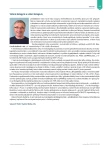Familial chylomicronemia: pathogenesis, clinical manifestations and case study
Authors:
Katarína Rašlová 1; Alexander Klabník 2; Miloslava Hučková 3; Daniela Gašperíková 3; Anna Maňková 4; Michal Vrablík 5; Richard Češka 5; Daniela Balažiová 3
Authors‘ workplace:
Koordinačné centrum pre FHLP, SZU, Bratislava
1; Kardiologická ambulancia a MedPed centrum, Námestovo
2; Biomedicínske centrum SAV, Bratislava
3; I. interná klinika UNM, Martin
4; III. interní klinika I. LFUK, Praha
5
Published in:
AtheroRev 2018; 3(2): 138-141
Category:
Overview
Familial chylomicronemia (familial chylomicronemia syndrome – FCS) is an autosomal recessive inherited metabolic disorder which causes mutations in the genes which have a central role in lipolysis of triglyceride-rich lipoproteins. A characteristic manifestation of FCS is the presence of chylomicrons (CH) in plasma also after 12-hour fasting. The most common cause of this disorder are mutations in the lipoprotein lipase (LPL) gene that are found in more than 80% patients. This form of FCS is also called lipoprotein lipase deficiency (LPLD). Incidence of FCS in the population is reported to be 1–2 per 1 million. Nonetheless the progress in DNA diagnostics suggests that the incidence may be higher. A patient whose case we present has overcome recurrent acute pancreatitis 9 times. It was only her 2nd pregnancy which was free from perinatal complications and ended by birth of a healthy boy. The success is the result of intensive multidisciplinary care, consistent diet planning and education and the right decision to commence the plasmapheresis treatment in the third trimester of pregnancy.
Key words:
familial chylomicronemia, lipolysis of triglyceride-rich lipoproteins
Sources
- Rašlová K. Metabolizmus lipoproteínov, dyslipoproteinémie a ateroskleróza. In: Mokáň M, Martinka E, Galajda P. Diabetes mellitus a vybrané metabolické ochorenia. Vydavateľstvo P + M: Turany 2008: 768–825. ISBN 9788096971398.
- Stroes E, Moulin P, Parhofer KG et al. Diagnostic algorithm for familial chylomicronemia syndrome. Atheroscler Suppl 2017; 23: 1–7. Dostupné z DOI: <http://dx.doi.org/10.1016/j.atherosclerosissup.2016.10.002>.
- Rodrigues R, Artieda M, Tejedor D et al. Pathogenic classification of LPL gene variants reported to be associated with LPL deficiency. J Clin Lipidol 2016; 10(2): 394–409. Dostupné z DOI: <http://dx.doi.org/10.1016/j.jacl.2015.12.015>.
- Brown WV, Gaudet D, Goldberg I et al. Roundtable on etiology of familial chylomicronemia syndrome. J Clin Lipidol 2018; 12(1): 5–11. Dostupné z DOI: <http://dx.doi.org/10.1016/j.jacl.2017.12.015>.
- Lloret-Linares C, Pelletier AL, Czernichow S et al. Acute pancreatitis in a cohort of 129 patients referred for severe hypertriglyceridemia. Pancreas 2008: 37(1): 13–22. Dostupné z DOI: <http://dx.doi.org/10.1097/MPA.0b013e31816074a1>.
- Wong B, Ooi TC, Keely E. Severe gestational hypertriglyceridemia: A practical approach for clinicians. Obstet Med 2015; 8(4:) 158–167. Dostupné z DOI: <http://dx.doi.org/10.1177/1753495X15594082>.
- Steinhagen-Thiessen E , Stroes E, Soran H et al. [GENIALL Investigators]. The role of registries in rare genetic lipid disorders: Review and introduction of the first global registry in lipoprotein lipase deficiency. Atherosclerosis 2017; 262: 146–153. Dostupné z DOI: <http://dx.doi.org/10.1016/j.atherosclerosis.2016.08.023>.
- Brahm AJ, Hegele R. Chylomicronaemia: current diagnosis and future therapies. Nat Rev Endocrinol 2015;11(6):352–362. Dostupné z DOI: <http://dx.doi.org/10.1038/nrendo.2015.26>.
- Goldberg AS, Hegele RA. Severe hypertriglyceridemia in pregnancy. J Clin Endocrinol Metab 2012; 97(8): 2589–2596. Dostupné z DOI: <http://dx.doi.org/10.1210/jc.2012–1250>.
- Lim R, Rodger SJ, Hawkins T LA. Presentation and management of acute hypertriglyceridemic pancreatitis in pregnancy: A case report. Obstet Med 2015; 8(4): 200–203. Dostupné z DOI: <http://dx.doi.org/10.1177/1753495X15605697>.
Labels
Angiology Diabetology Internal medicine Cardiology General practitioner for adultsArticle was published in
Athero Review

2018 Issue 2
Most read in this issue
- What a rheumatologist should know about statins and their side effects
- Familial chylomicronemia: pathogenesis, clinical manifestations and case study
- Detection of aortic calcifications within the assessment of lateral densitometric scans
- The impact of rheumatic diseases on cardiovascular risk and lipidogram
